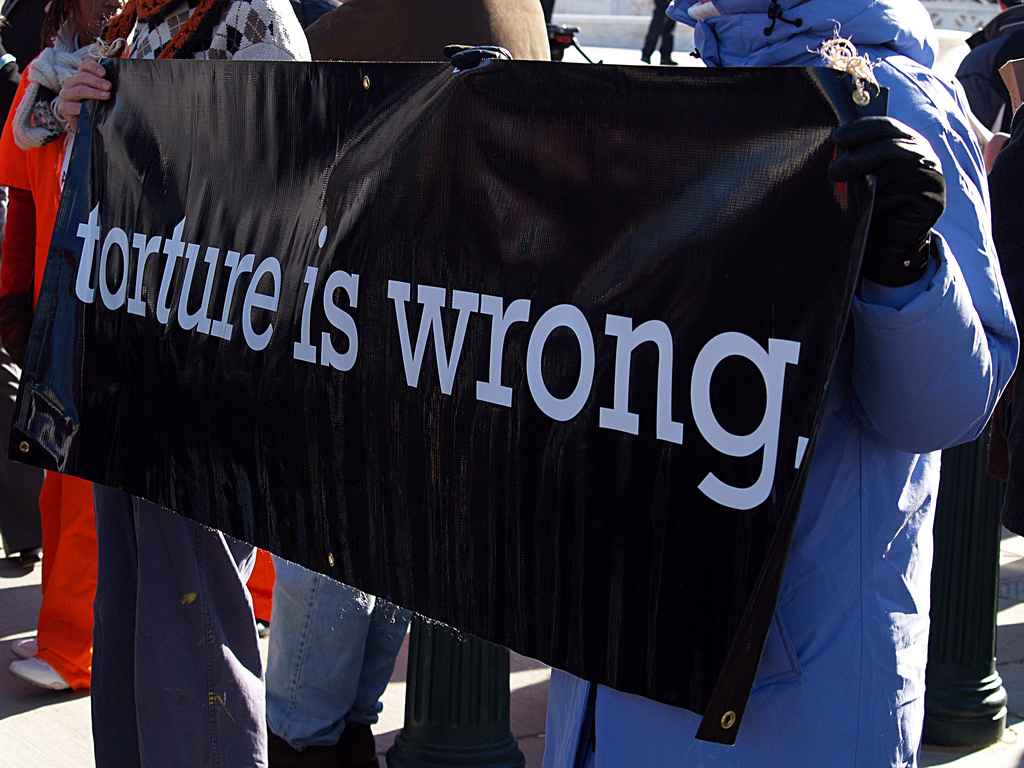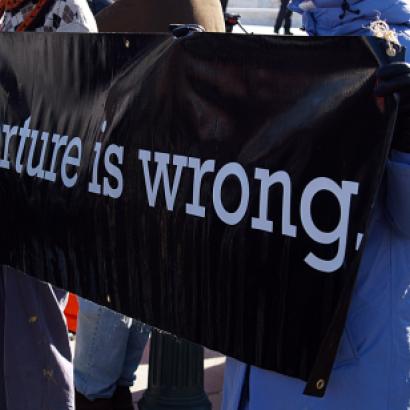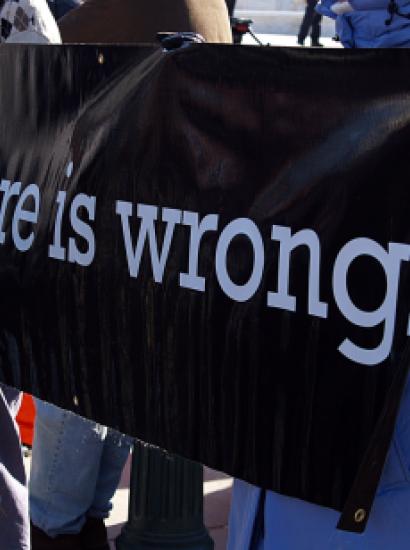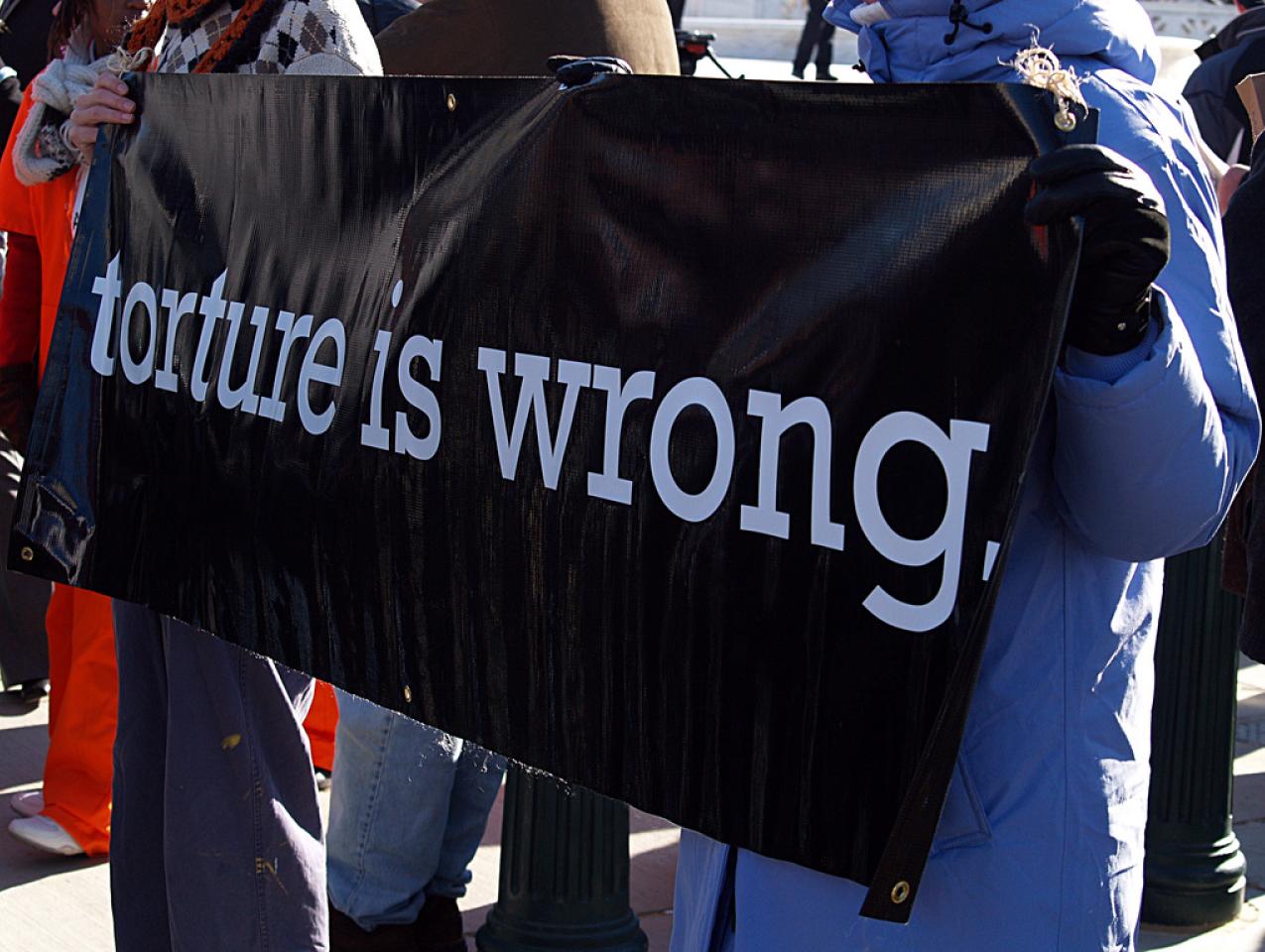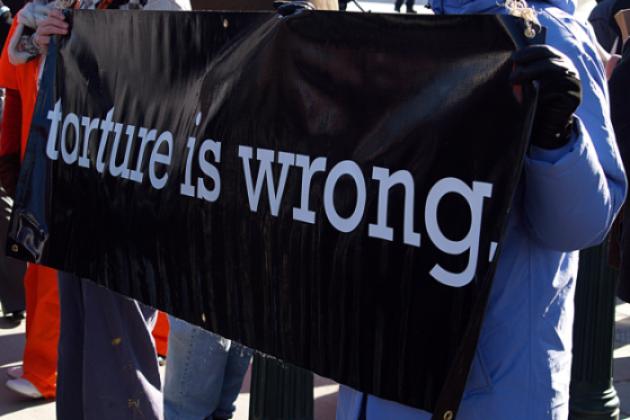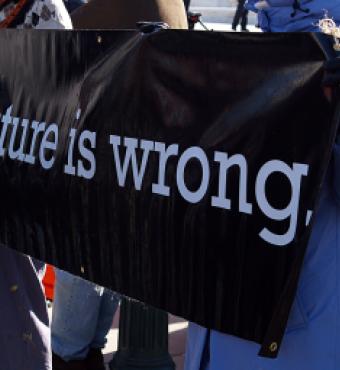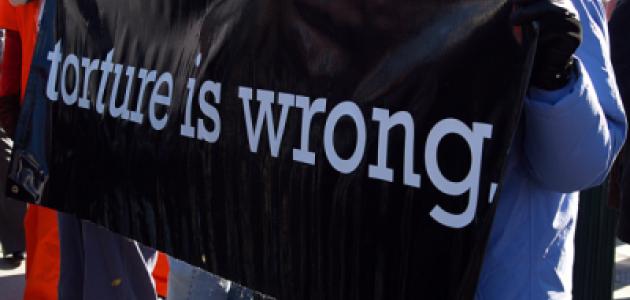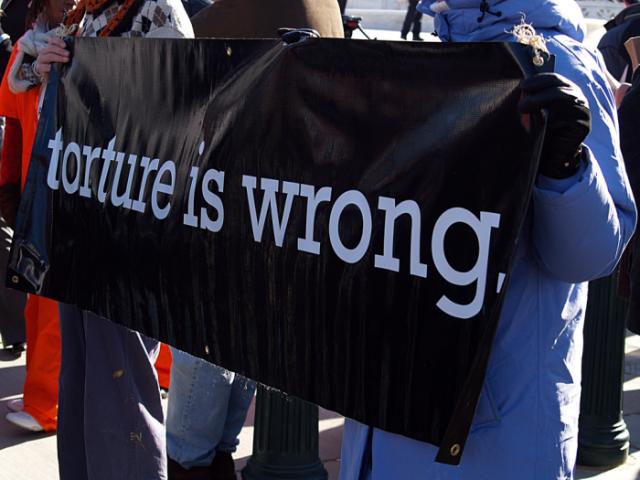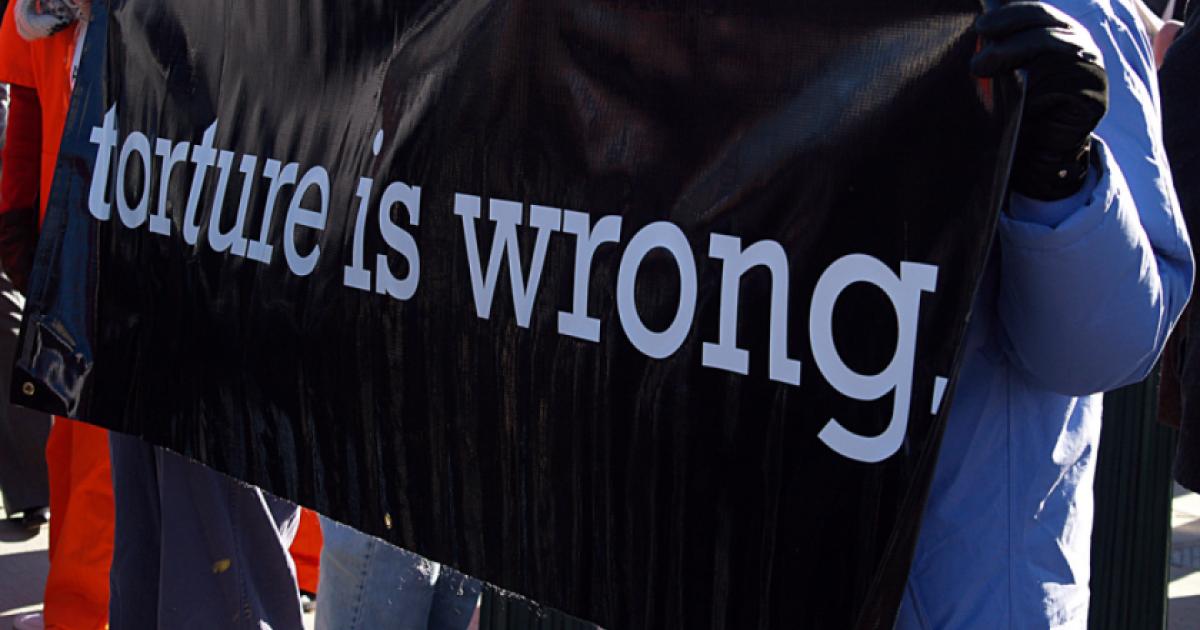- Law & Policy
Last week, Senator Dianne Feinstein, head of the Senate Select Committee on Intelligence, released to great fanfare, an exhaustive report, prepared solely by the Democratic members of her Committee, on the Central Intelligence Agency’s Detention and Interrogation Program, adopted in the aftermath of the 9/11 attacks on the United States. It is easy to criticize this report, as Republican Senators Mitch McConnell and Saxby Chambliss have done, on procedural grounds. It is even easier, perhaps, to denounce the report on substantive grounds, as was done recently by former Vice President Dick Cheney, who on Meet the Press offered a full-throated defense of CIA practices, saying “I would do it again in a minute.”
Unfortunately, when asked to give his defense of torture, he coolly changed the subject by referring only to the attack on 9/11 by al-Qaeda groups in ways that suggest that he had never read the report at all. Cheney totally failed to meet head on the damning charges in the report about the CIA program’s operation. Its core finding is that the various “enhanced interrogation techniques”—a polite euphemism for waterboarding, sleep deprivation, and various forms of beatings—contributed little useful, let alone unique, intelligence to the fight against al-Qaeda. The CIA interrogation efforts also probably had little or nothing to do with the eventual killing of Osama bin Laden.
There is a dispute as to just how much knowledge of these activities was, during the Bush years, passed on to members of the White House, the State Department, the Department of Justice, Congress, the media, and even the CIA’s own inspector general. Nothing in somewhat lame CIA Response can sugarcoat the major finding that during the critical years between 2002 and 2006, the CIA actively and improperly shielded its programs from outside scrutiny, in large measure because the field operatives knew that their interrogation tactics had not been authorized by any of the political branches nor by the CIA itself.
In making these observations, I should state that for some years I served as a member of the Constitution Project’s task force on Detainee Treatment. Some 20 months earlier, in April of 2013, we published an exhaustive report that came to essentially the same conclusion as the Senate report. The Detention Project was organized by Virginia Sloan, President of the Constitution Project, and the report itself was prepared by a large team of investigators, led by the energetic, capable, and extraordinarily thorough Neil A. Lewis.
In preparing that report, Lewis and his team did not have access to any classified information, but did engage in a massive amount of independent investigation, which included many interviews of key people involved in formulating and executing this policy. Its detailed recounting of the evidence left no doubt in my mind that the United States government did commit systematic acts of torture, which were contrary to this nation’s value structure, laws, and international treaty obligations. In my opinion, this is not a close case on which reasonable minds can differ.
Although our report has not had anything like the influence of the Senate report, it is free of the objections lodged against that report. Unlike the Senate report, our task force was balanced politically, and included a large number of people who did not have any axe to grind on the issue. Chaired by James Jones, a former U.S. Ambassador to Mexico, it included Asa Hutchinson, the newly elected governor of Arkansas, David Irvine, a retired brigadier general, Claudia Kennedy, a retired major general, Thomas Pickering, a former UN ambassador, William Sessions, a former head of the FBI, as well as academics David Gushee, Azizah al-Hibri, and Gerald Thomson.
In dealing with the combined impact of the two reports, it is important to stress that opposition to torture by American officials does not necessarily imply that the United States should take a passive stance in dealing with Al-Qaeda and its offshoot organizations. The Constitution Project’s Detainee Report bracketed any discussion whatsoever of other facets of the larger question of how best to deal with terrorist threats from any source. In dealing with those issues, I think that there is no contradiction between taking a strong stance against torture and maintaining a vigorous system of surveillance to detect and root out terrorist threats to the United States and its allies.
The real question here is on the effectiveness of the various techniques. From the outset, it should have been clear that the payoff from interrogation of high-value captives could only yield limited information of value, no matter how effectively conducted. It did not take much imagination for high-level al-Qaeda operatives to figure out which of their numbers were in the custody of the United States. The organization could therefore alter its various practices and protocols so as to depreciate the value of the information that these operatives possessed. The passage of time also degrades the value of any information that the detainees had about al-Qaeda plans or the whereabouts of its key operatives.
Indeed, the severe interrogation of these suspects therefore always carries the serious risk that even high-level targets do not possess any information of value. But it is all too easy to refuse to take these statements at face value and to continue the interrogation until the suspects make up stories that can actually mislead American intelligence officials. The constant cycle of ever more severe interrogation carries with it the seeds of its own destruction. It may well be wise to detain these subjects indefinitely so that they cannot rejoin the fray. But not to torture them.
The situation with electronic surveillance is exactly the opposite. We no longer need intelligence operatives to use horrific techniques to gain information of at most modest value. Surveillance involves, to be sure, some invasion of privacy, but those personal invasions are widespread and trivial in comparison to the focused harm from torture. In dealing with surveillance, moreover, it is necessary to face two sorts of issues. The first is whether the President has some “inherent” powers to order various kinds of electronic surveillance, without complying with the various legislative requirements, most notably the Foreign Intelligence Surveillance Act of 1978.
My view, well expressed in an open letter published in 2006 in the New York Review of Books, was and is, that the President does not have such authority, such that he should have sought Congressional approval before expanding his operations, which he could have gotten, at least in some form, in the aftermath of the 9/11 attacks. On this issue at least, there is some overlap between classical liberals and civil libertarians, in order to preserve our basic system of separation of powers.
The two groups may part company on the separate question of whether the Congress should give the President that authority. On this issue, I break with many civil libertarians, and have written in defense of the NSA. In my view, Congress should extend such powers to the President. Information from current intelligence sources is subject to none of the obvious objections that can be raised to intelligence obtained through torture. The information is current and subject to corroboration. Personal intrusions are small, and these can be contained by a policy that requires the NSA to store the information until it is needed, subject thereafter to a warrant requirement except in the few cases of bona fide necessity.
The balance between individual autonomy and national security is thus totally different in the two cases. The sensible government invests in areas that offer high return at low risk, and not in those that offer low return at high risk. In these cases, it is critical to stress, yet again, that the libertarian prohibition against force and fraud necessarily requires the government to take steps to deal with threats of force, as well as its actual use, when a response may well come too late.
That same attitude should influence how one thinks about engaging our enemies on the battlefield. Here too there is both an institutional and substantive issue. On the former, Congress has taken far too long to decide whether, and if so, how, to reauthorize the use of military force in light of the menace posed by ISIS. Yet by the same token, my own view is that the threats are so diffuse that a broader authorization is better than a weaker one, a position with which many disagree. But again, there is nothing inconsistent with taking the view that the United States should take strong positions in combat to avoid the uncertainties of drawn out engagements and a refusal to countenance the use of torture.
It is important to stake out this ground, moreover, because it affords an answer to many of those who have defended the CIA on the ground that it is easy to forget the anxiety and turmoil that came hard on the heels of 9/11. Even putting aside former Vice President Cheney, the more moderate defenses of the CIA fall short. A recent op-ed in the Wall Street Journal by Louis Freeh takes just that line in accusing Senate Democrats of “9/11 amnesia.” Freeh begins by comparing 9/11 to Pearl Harbor, by noting that the Congressional Authorization of the Use of Military Force put the nation on a war footing.
But the comparison is surely wildly overdrawn, for Freeh neglects to mention that the scope of military operations in World War II was orders of magnitude larger than in the aftermath of 9/11. To be sure, it may ease some of the burden on the CIA to remind us that some, but by no means all, of its actions were approved by the President and the Justice Department. It is, indeed, an open question whether the public should be more discomfited by a rogue operation in the CIA or by one that received a qualified blessing from the President, Congress, and the Department of Justice. Both scenarios are bad, albeit in different ways.
In his larger effort to discredit the Democrats, Freeh’s effort fails. Times of crisis call for calm nerves and good judgment, not counterproductive activities. The bad news is that the initial detention program was a horrible mistake, and should be have been understood as such at the time. The good news is that the political forces for self-correction of that mistake long antedated the publication of both the Constitution Project and Senate reports, as the program was wound down in the last two years of the Bush administration (at the same time as the surge), and was formally put to rest in the early days of the Obama Administration. It will be hard to repair the past damage. But at least there is hope that this nation and its political leaders will learn from their past mistakes.







